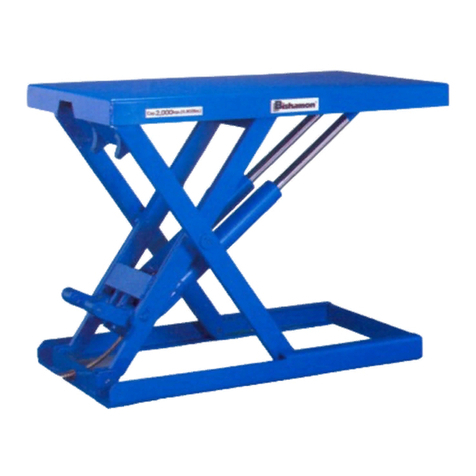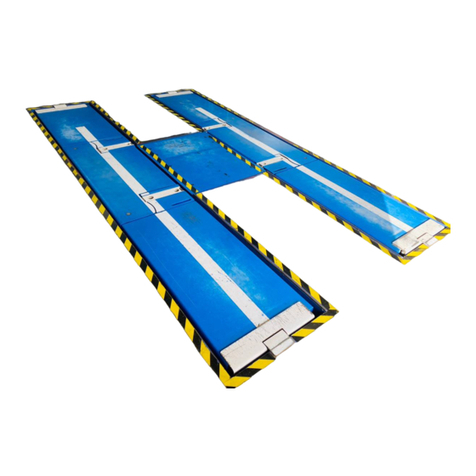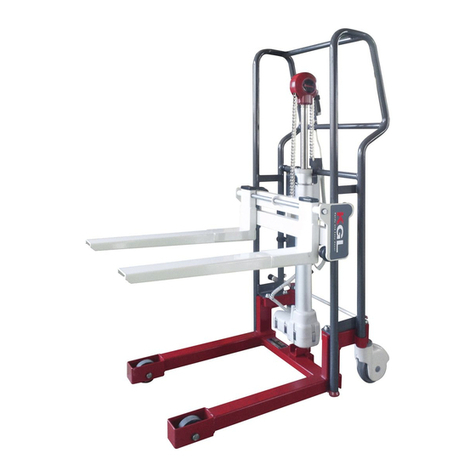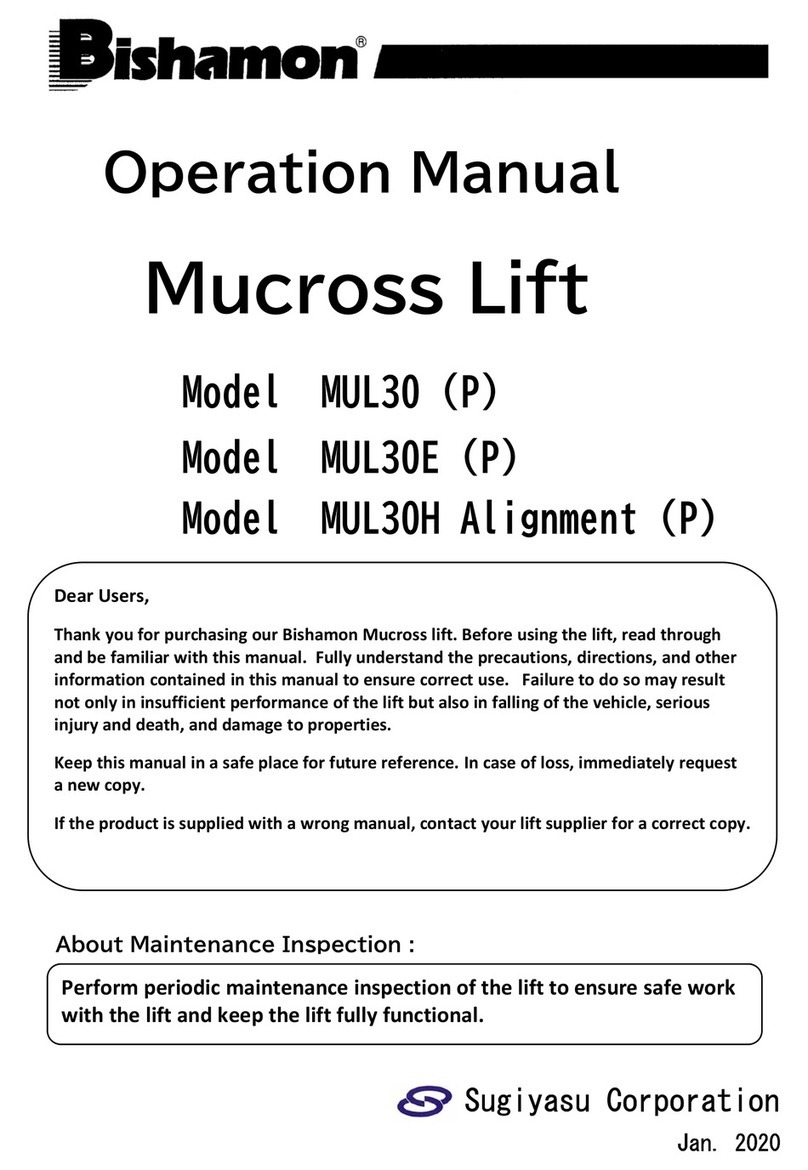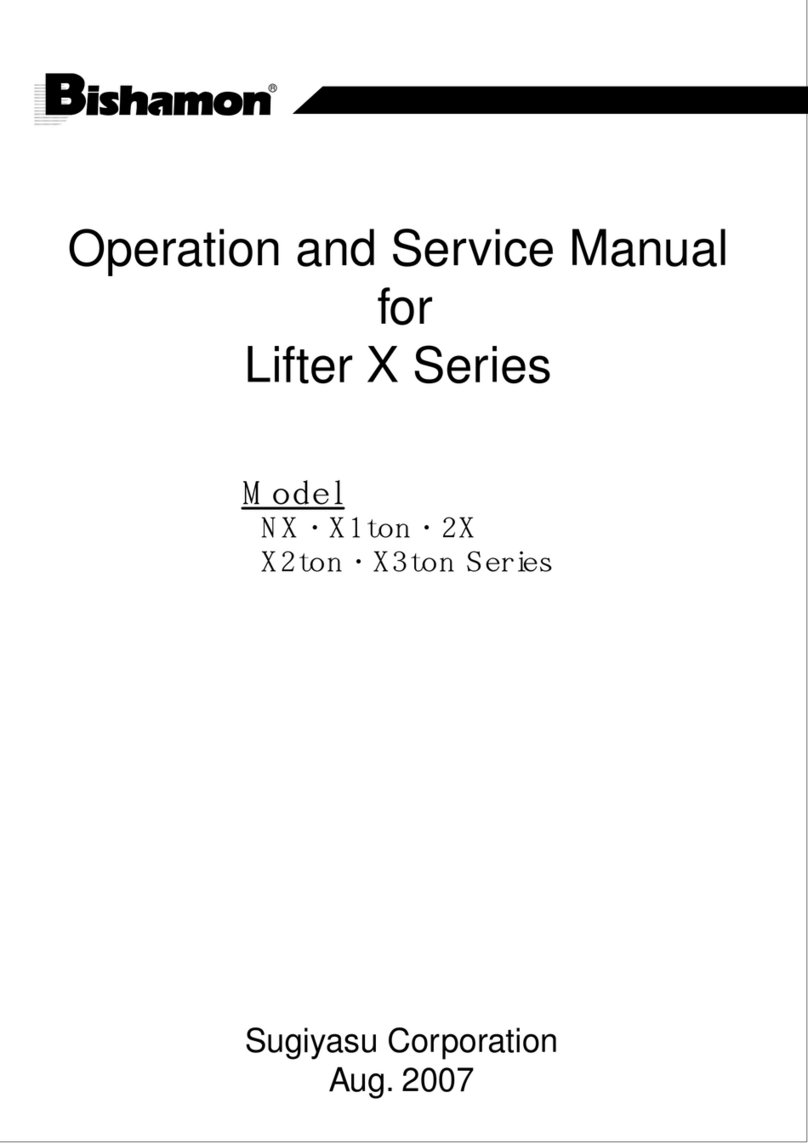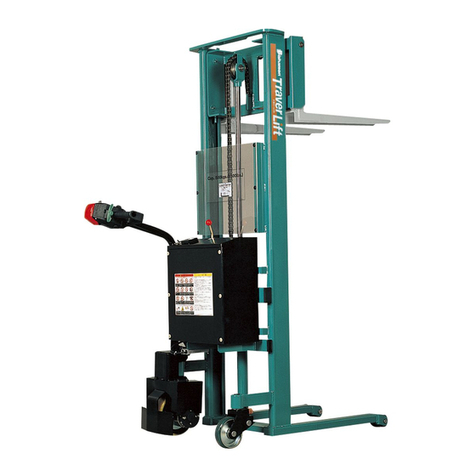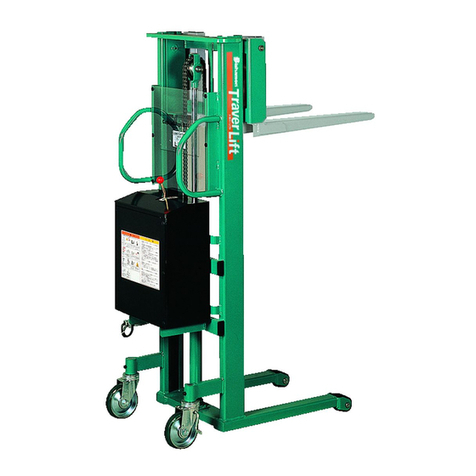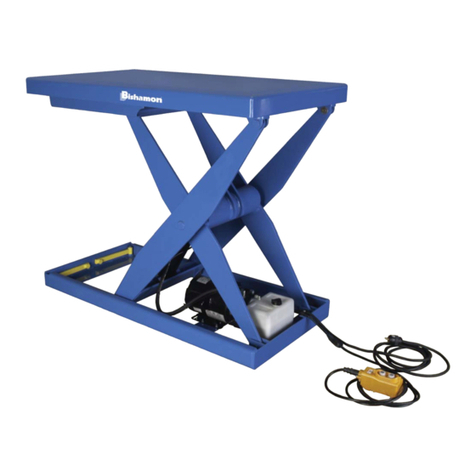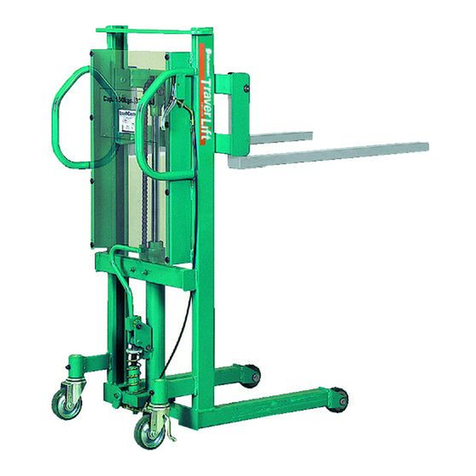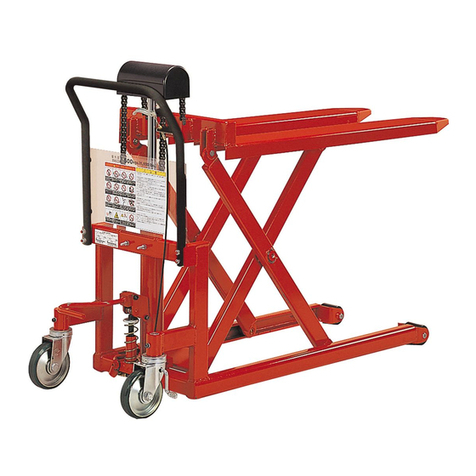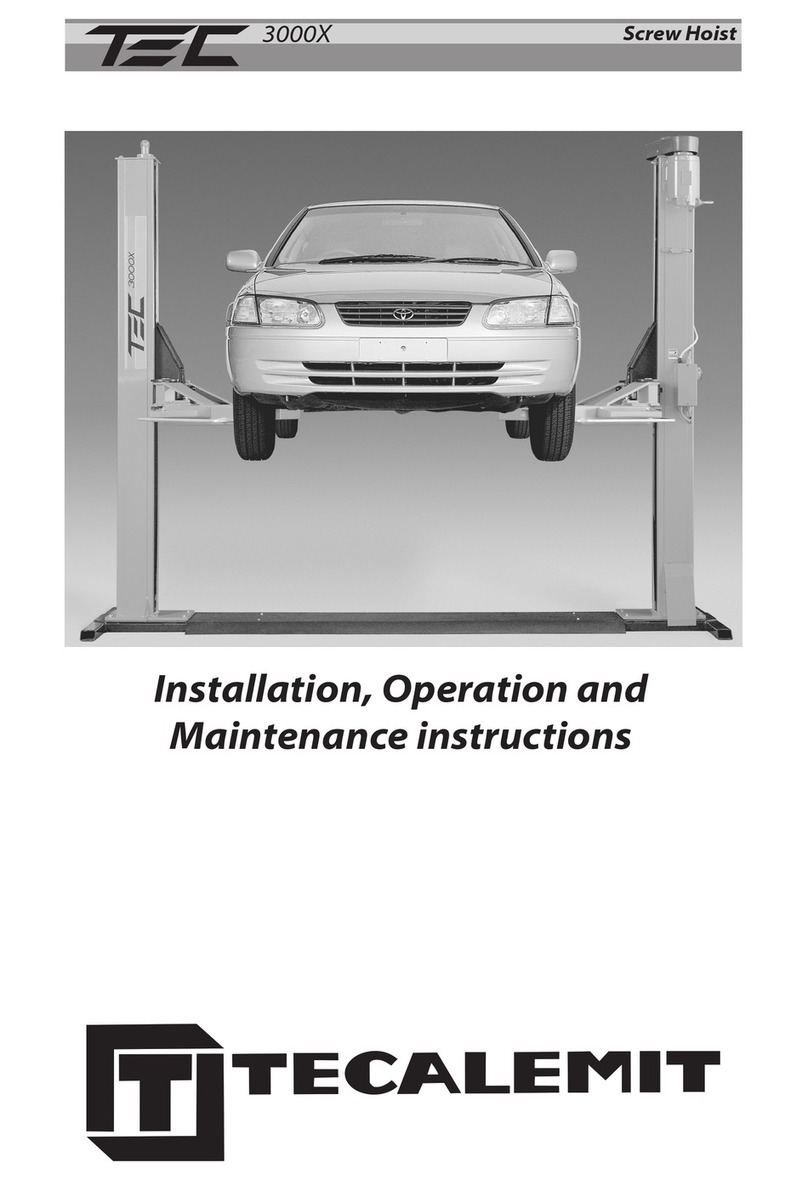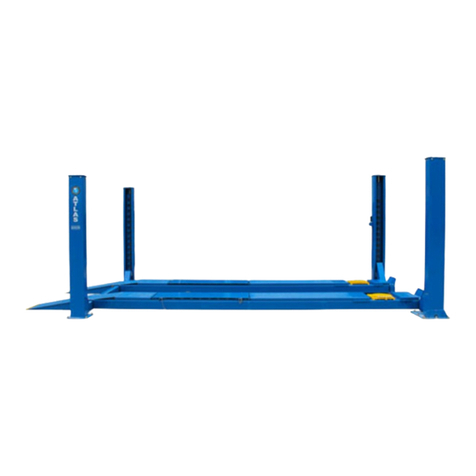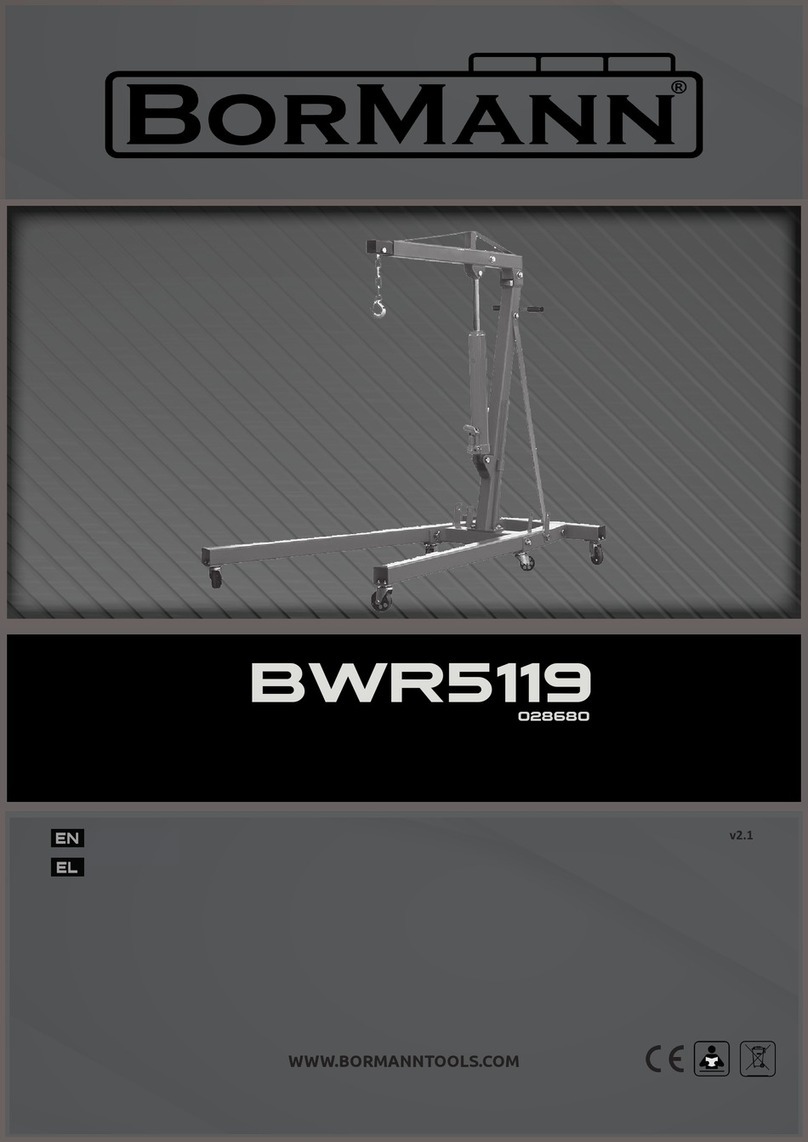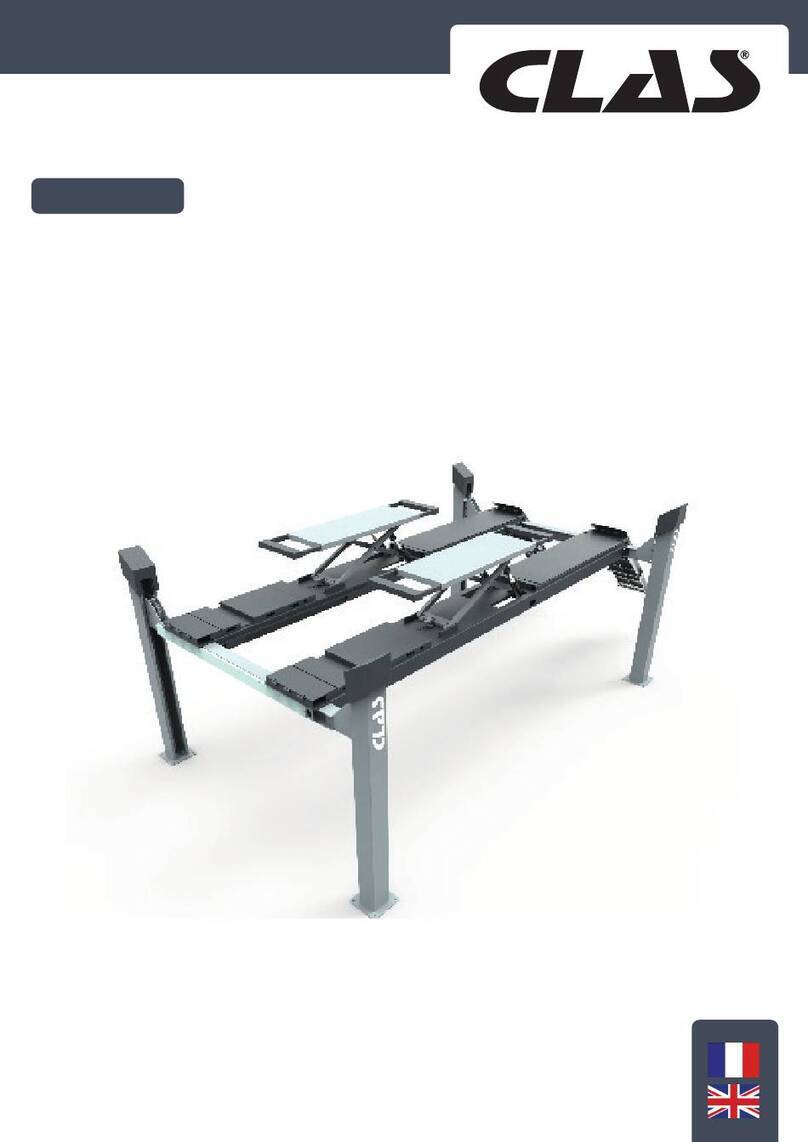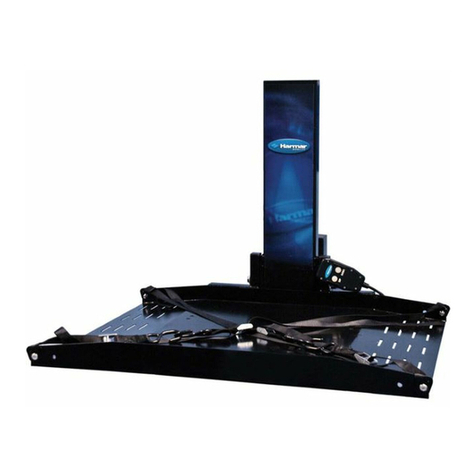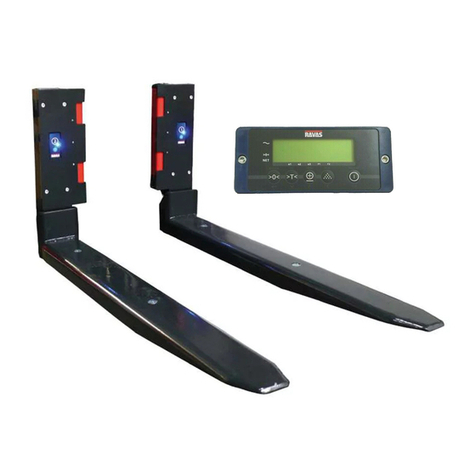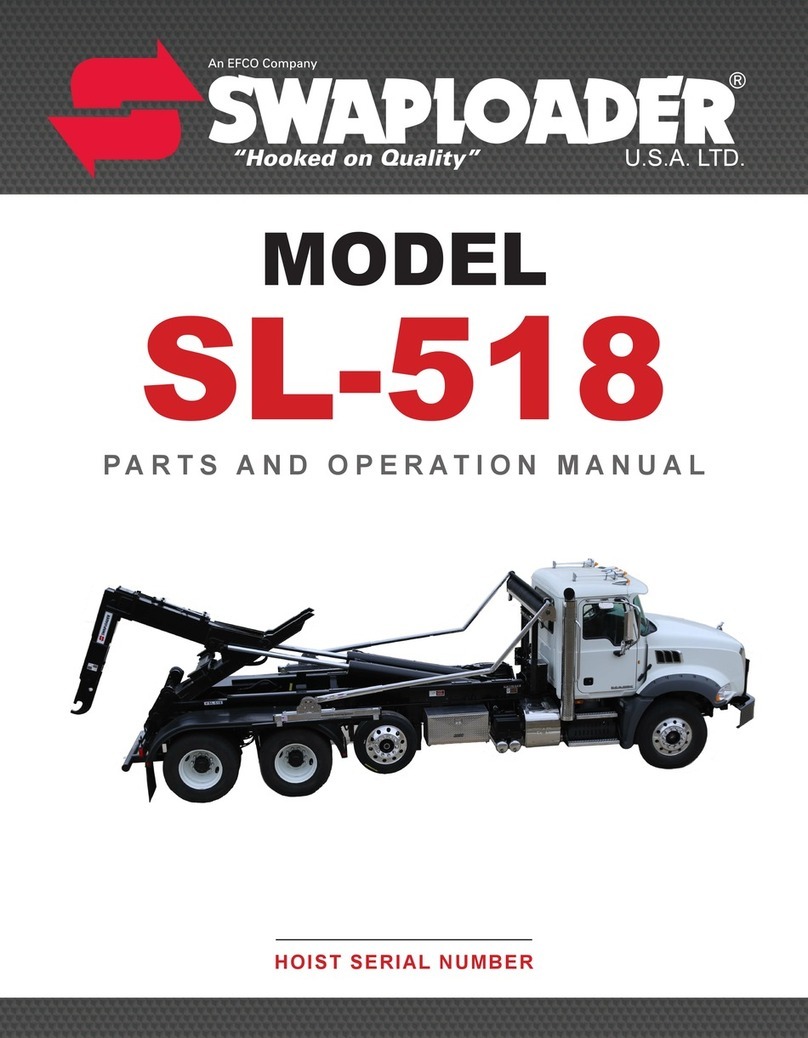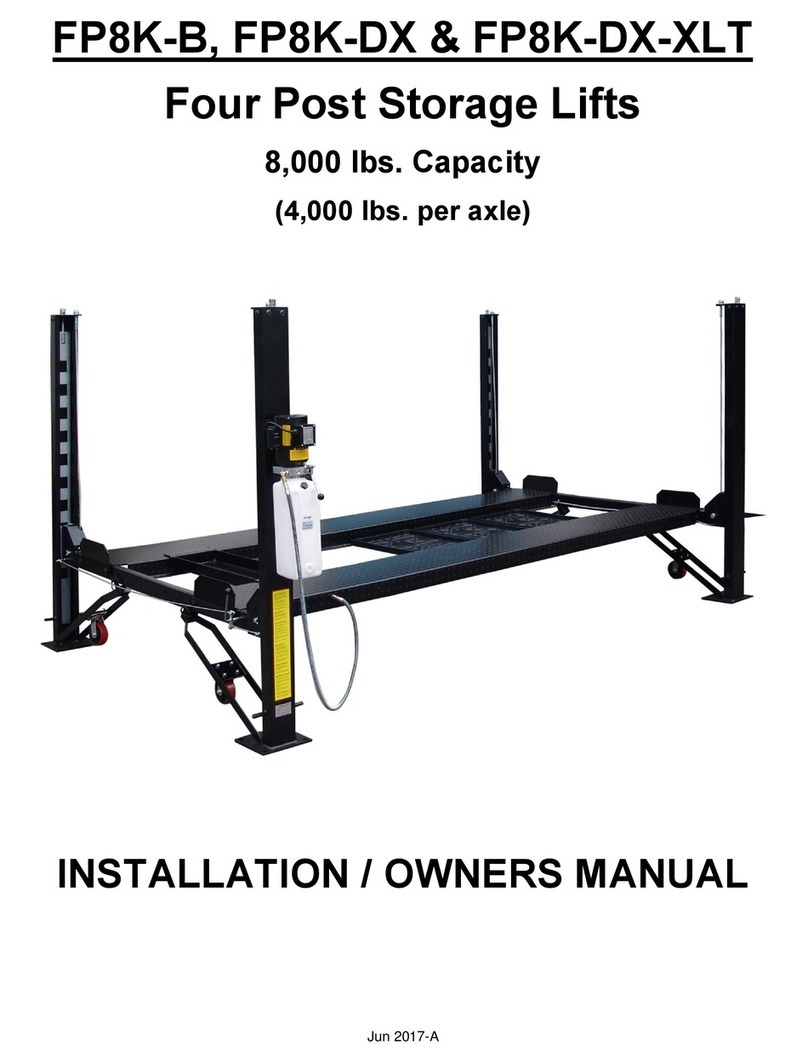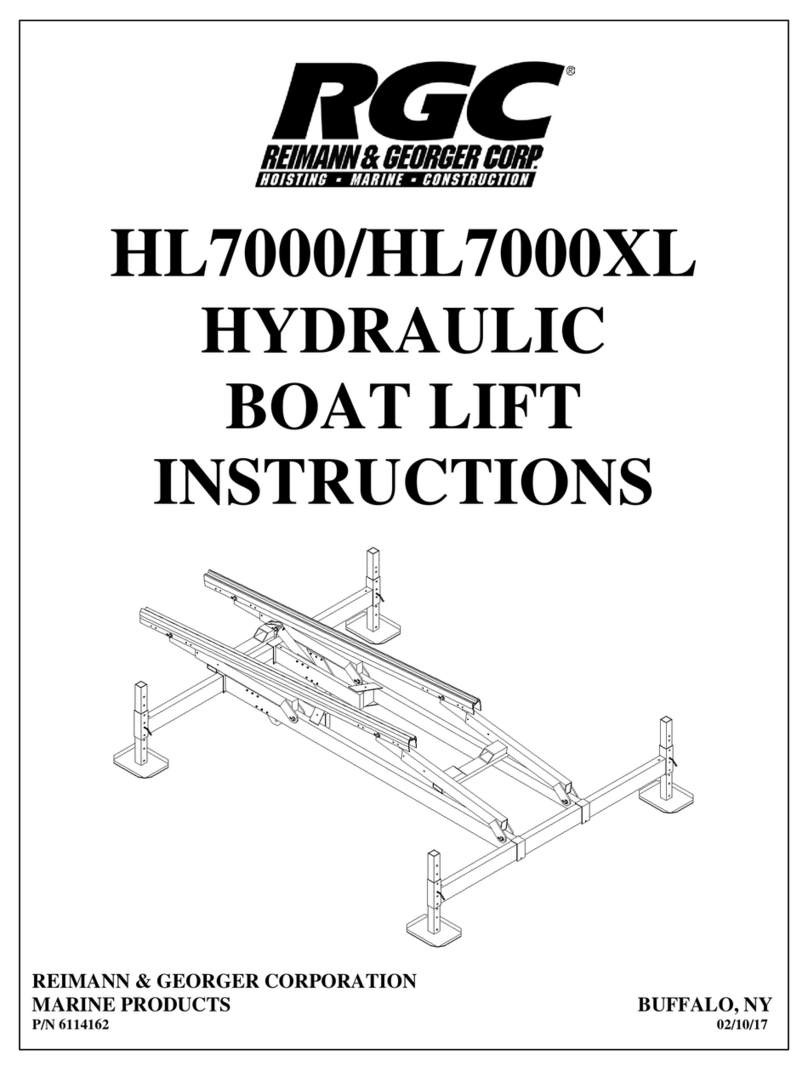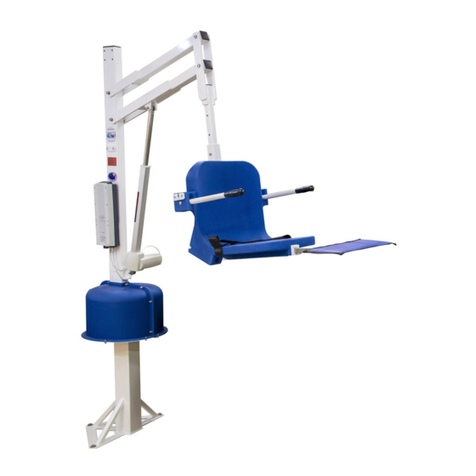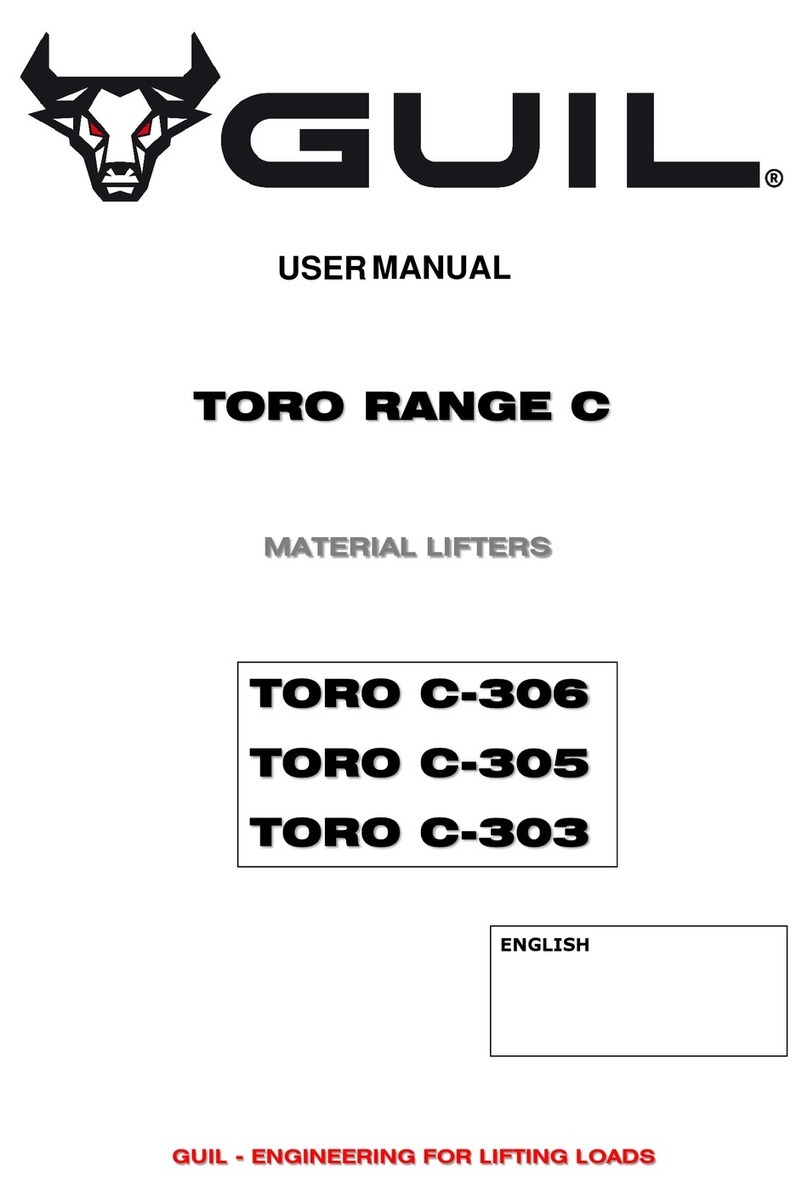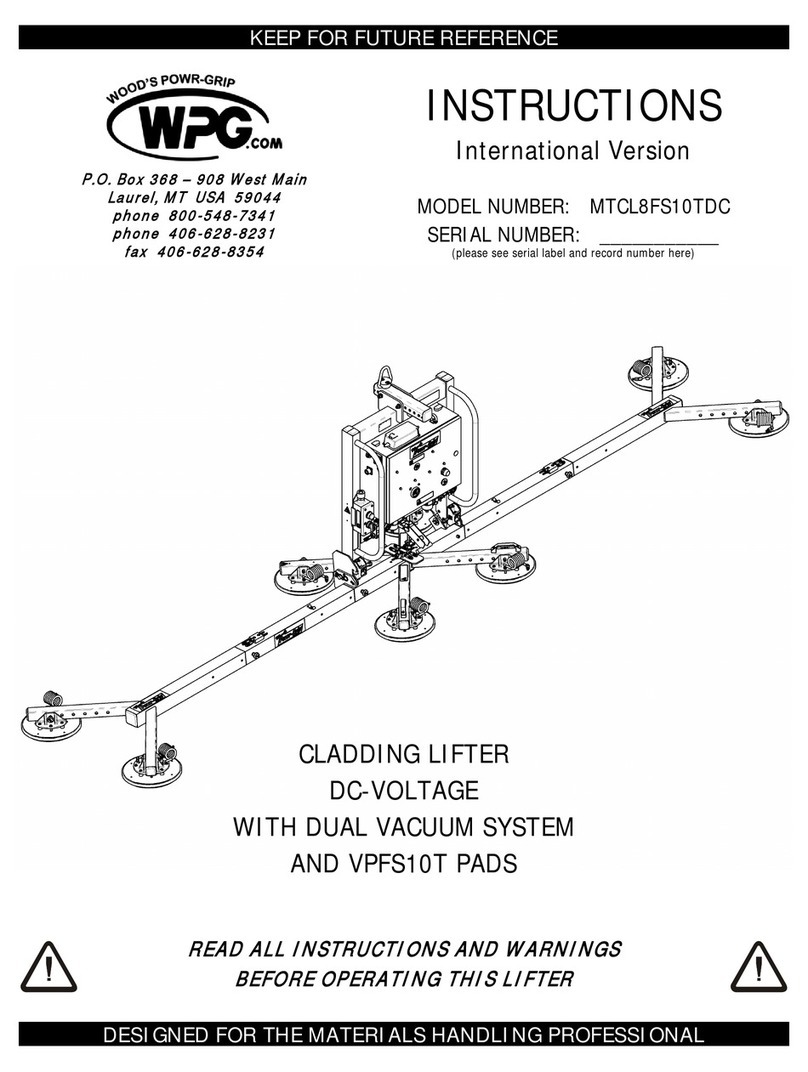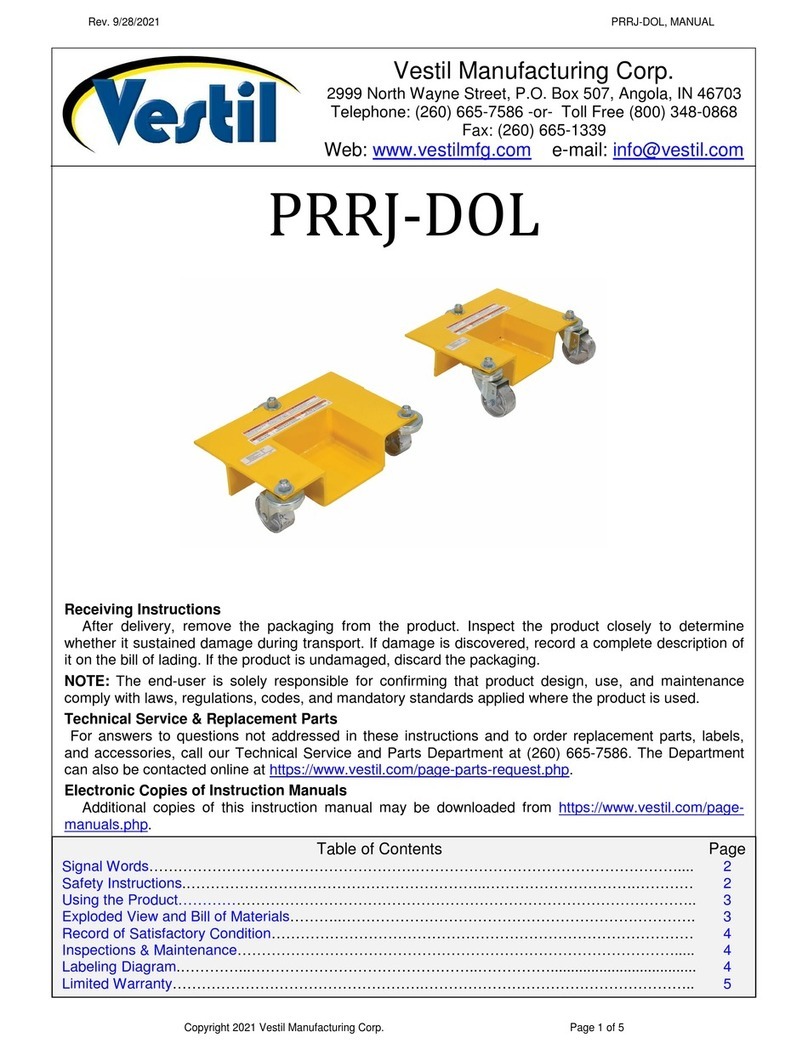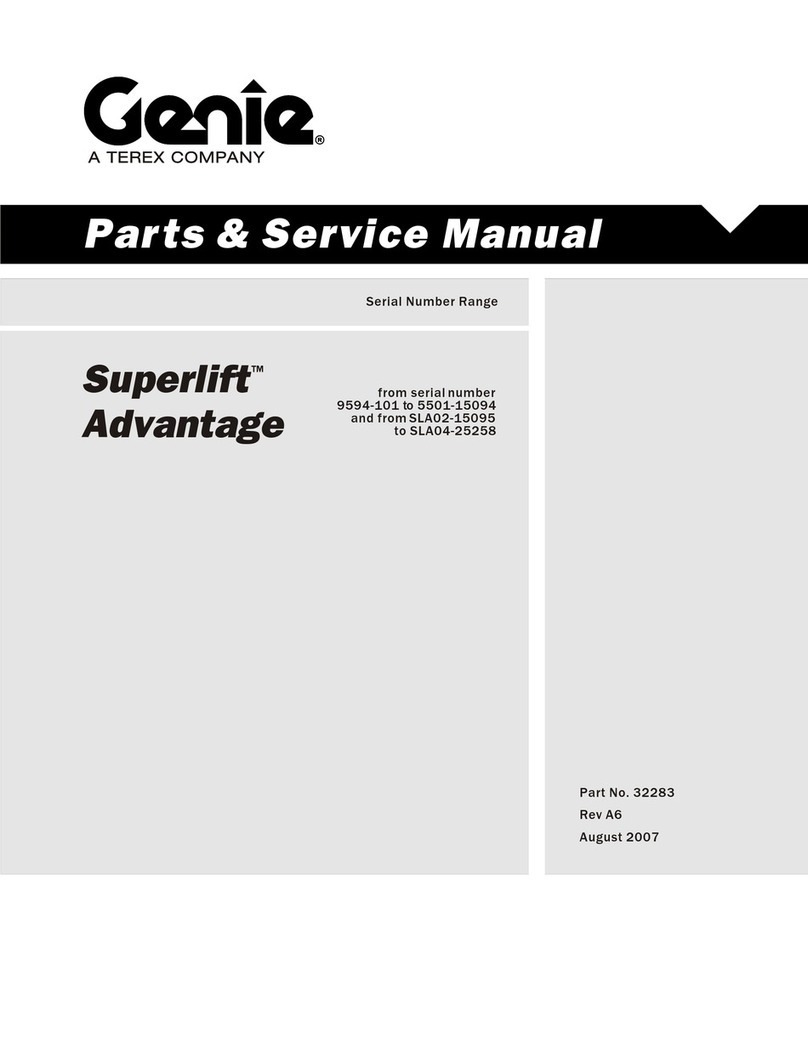Thoroughly read the manual and completely understand its contents before use.
<Operations Preparations>
1. The device is a lift for vehicle repairs. Do not use for any other purpose.
2. The device does not have any outdoor or car wash specifications. Do not use in car washes, outdoors,
or in high humidity locations. Malfunctions and non-conformances due to water leaks are not covered
by the warranty.
3. Do not lift vehicles over the maximum performance. The maximum performance is 4,000kg.
4. If any of the safety devices do not operate normally, do not use the lift.
5. Make sure to always keep the rubber supporter surface clean, and do not use if there are any oil or
dirt adhesions.
6. Do not use anything other than the designated supporter to lift vehicles.
7. If adjusting or storing the swing arm or supporter, take care not to crush your hands or fingers.
8. Accurately set the supporter on the lifting point, and do not lift vehicles that have no clear lifting point.
For correct lifting points, see the vehicle log book.
9. If a vehicle pinch panel, etc., is interfering with the arm, adjust the supporter height before use.
10. The arm restraint device does not support abnormal loads that occur due to vehicle weight or shock.
Correctly align the supporter to the jack point to prevent eccentric loads or defective supporter
alignment applying abnormal force to the runout device.
11. Adjust the height of the supporter so that loads are applied to the arms as evenly as possible, and
check that the arm is securely mounted to the arm restraint device before raising a vehicle.
12. The lengths of the swing arms may differ at the front and back of the vehicle. Set so that the heavier
vehicle weight is on the short arm, and the lighter vehicle weight on the long arm.
<Raising and Lowering Operations>
1. During lift operations, always pay attention to the vehicle and the lift surroundings, and never operate
while looking away.
2. Do not raise vehicles while a person or luggage are on board.
3. When raising, pause when the supporter rubber aligns with the vehicle, and then check that the
supporter rubber is correctly aligned.
4. When lowering, do not approach or touch the vehicle or lift moving parts.
5. Do not leave tools or parts in the posts or under the lift during use. Doing so may cause lift malfunction
or the vehicle to fall.
6. Check that there are no people or objects in the vehicle or the vicinity of the lift when lowering.
7. Lower the carriage completely before loading or unloading a vehicle. Also, make sure that the swing
arms are fully open before loading or unloading a vehicle.
8. Unloading is a 2-step operation.
The 1st step is to release the lowering stock hook, and the 2nd step is the lowering operation.
9. If the operations lever is heavier than usual during the 1st step of the operation, raise briefly, and then
lower again.
Forcing an operation risks the vehicle tilting or lift malfunction.
10. Stop vehicles with high roofs before their roofs reach the roof sensor.
Upon contact with the roof sensor the rising will stop, but there is a risk of scratching the roof.




















